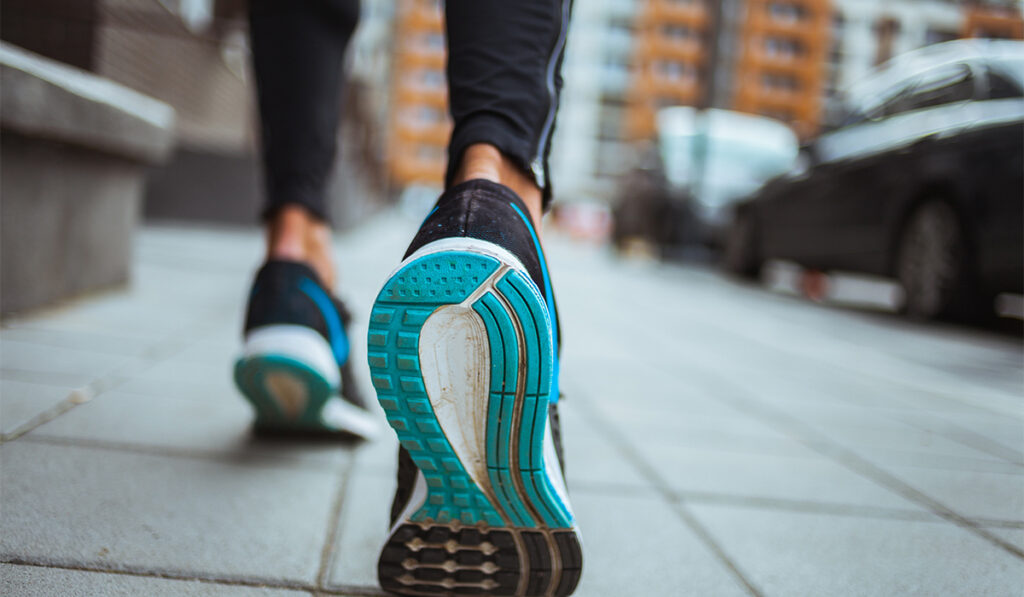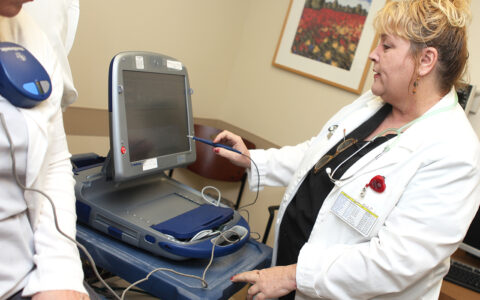A team of clinical, engineering and data science researchers at Vanderbilt University Medical Center has developed a novel system for monitoring bone stress in recreational and professional athletes, with the goal of anticipating and preventing injury.
The system, based on machine learning and biomechanical modeling techniques, uses data from lightweight, low-profile wearable sensors in runners’ shoes to estimate forces on the tibia – a common location for stress fractures. The technology builds on the team’s 2019 study finding that commercially available wearables do not accurately monitor stress fracture risks.
“Today’s wearables measure ground reaction forces to assess injury risks like stress fractures to the leg,” said Karl Zelik, Ph.D., an assistant professor of mechanical engineering, biomedical engineering and physical medicine and rehabilitation at Vanderbilt. Zelik says most bone loading actually comes from muscle contractions. “It’s this repetitive loading on the bone that causes wear and tear and increases injury risk to bones, including the tibia.”
“It’s this repetitive loading on the bone that causes wear and tear and increases injury risk to bones.”
Zelik is joined on the team by Peter Volgyesi, Ph.D., a research scientist at the Vanderbilt Institute for Software Integrated Systems, Leon Scott, M.D., an assistant professor in the Department of Orthopaedic Surgery, and Emily Matijevich, Ph.D., a Vanderbilt graduate student and director of the Center for Rehabilitation Engineering and Assistive Technology Motion Analysis Lab.
Small Changes Wreak Big Damage
If the rate of microdamage from repeated bone loading outpaces the rate of tissue healing, the researchers say there is an increased risk of a stress fracture that can put a runner out of commission for two to three months. The technology that Zelik and team are developing aims to better determine overuse injury risk factors and then prompt runners to modify training before an injury.
“Small changes in bone load equate to exponential differences in bone microdamage,” Matijevich said. “We have found that 10 percent errors in force estimates cause 100 percent errors in damage estimates.”
Largely over- or under-estimating the bone damage that results from running has severe consequences for athletes trying to understand their injury risk over time, Matijevich says. “This highlights why it is so important for us to develop more accurate techniques to monitor bone load and design next-generation wearables.”
“Small changes in bone load equate to exponential differences in bone microdamage.”
Practical Application of Machine Learning
The machine learning algorithm used in the technology leverages the Least Absolute Shrinkage and Selection Operator regression, Volgyesi said. “It uses a small group of sensors to generate highly accurate bone load estimates, with average errors of less than 3 percent, while simultaneously identifying the most valuable sensor inputs.”
The new algorithms have generated bone force data that is up to four times more accurate than available wearables, providing a unique capability to estimate internal tissue forces and damage due to repetitive loading.
The system is one of the first examples of a wearable technology that is both practical to wear and able to accurately monitor forces on and microdamage to musculoskeletal tissues. The team has begun applying similar techniques to monitor low back loading and injury risks, designed for people in occupations that require repetitive lifting and bending.
“This is a highly practical application of machine learning, markedly demonstrating the power of interdisciplinary collaboration with real-life broader impact,” Volgyesi said. The team has filed multiple patents on their invention and is in discussions with wearable tech companies to commercialize the innovations.







